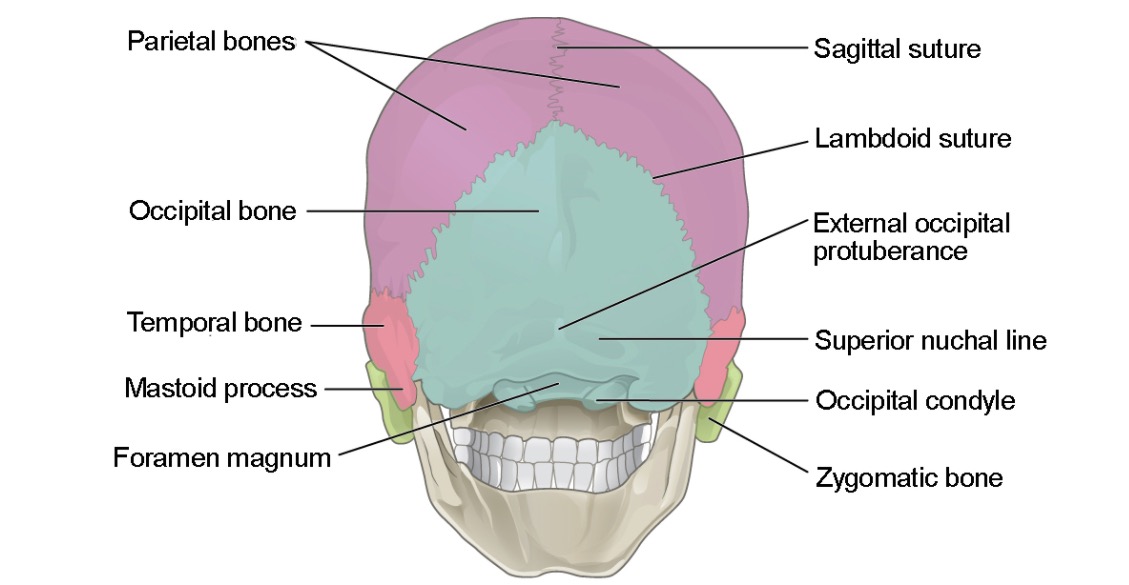Playlist
Show Playlist
Hide Playlist
Palatine Bone
-
Slides Anatomy Skull.pdf
-
Download Lecture Overview
00:01 We have reached the last bone on our agenda, which is the palatine bone. 00:06 This bone is quite obscured from sight as it is wedged in between the maxilla and the sphenoid bones. 00:15 The palatine bone contributes to the formation of quite a few structures including the floor, and the lateral wall, the nose, the floor of the ocular orbit, the posterior aspect of the osseous hard palate and to the inferior orbital fissure. 00:33 Once again, similarly to the other bones we have discussed, let's divide up the palatine bone into various components. 00:41 Thus, the palatine bone has two plates, the horizontal and the perpendicular, as well as three processes pyramidal, orbital and sphenoidal. 00:53 The horizontal plates of the palatine bone have two surfaces, the superior nasal and inferior palatine surfaces. 01:03 Medially,these surfaces possess the nasal and the Palatine crest respectively, while the nasal crest articulates with the bones of the nasal septum superiorly. 01:15 The anterior border the horizontal plates articulates with the Palatine processes of the maxilla to form the hard osseous palate. 01:24 Posteriorly, these plates spin out and offer points of insertion for certain muscles of articulation. 01:32 Laterally, the horizontal plates meet with the perpendicular plates and at their junction is located the greater palatine groove. 01:41 The perpendicular plates are also two thin plates, which also possess two surfaces: the nasal and maxillary. 01:50 The nasal surface of the perpendicular plate possesses two crests, the conchal and ethmoidal. 01:57 The nasal surface of the perpendicular plate contributes to the formation of the inferior, middle and part of the superior nasal meatuses. 02:07 The maxillary surface mainly articulates with the nasal surface of the maxilla and contributes to the posterior part of the medial wall, the maxillary sinus. 02:15 Now the final portion, the processes of the palatine bone. 02:19 As I mentioned before, the palatine bone has three processes. 02:24 The first process, the pyramidal process is triangular in shape, and articulates with the pterygoid plates of the sphenoid bone and with the maxillary tuberosity anteriorly. 02:35 The orbital process has three articular surfaces which include the maxillary surface, spenoidal surface and ethmoidal surface. 02:44 And then we have two non-articular surfaces: the orbital surface which contributes to the formation of the orbital floor and the lateral surface which forms the lower margin of the inferior orbital fissure. 02:59 And lastly, the sphenoidal process which articulates with the pterygoid plates of the sphenoid, the vomer, and also contributes to the formation of the roof and the lateral wall of the nose.
About the Lecture
The lecture Palatine Bone by Craig Canby, PhD is from the course Head and Neck Anatomy with Dr. Canby.
Included Quiz Questions
Which process of the palatine bone articulates with the maxillary tuberosity?
- Pyramidal process
- Orbital process
- Nasal process
- Sphenoidal process
- Mandibular process
Which structure is a part of the perpendicular plate of the palatine bone?
- Conchal crest
- Supreme nasal meatus
- Palatine crest
- Nasal crest
- Greater palatine groove
Customer reviews
5,0 of 5 stars
| 5 Stars |
|
5 |
| 4 Stars |
|
0 |
| 3 Stars |
|
0 |
| 2 Stars |
|
0 |
| 1 Star |
|
0 |




